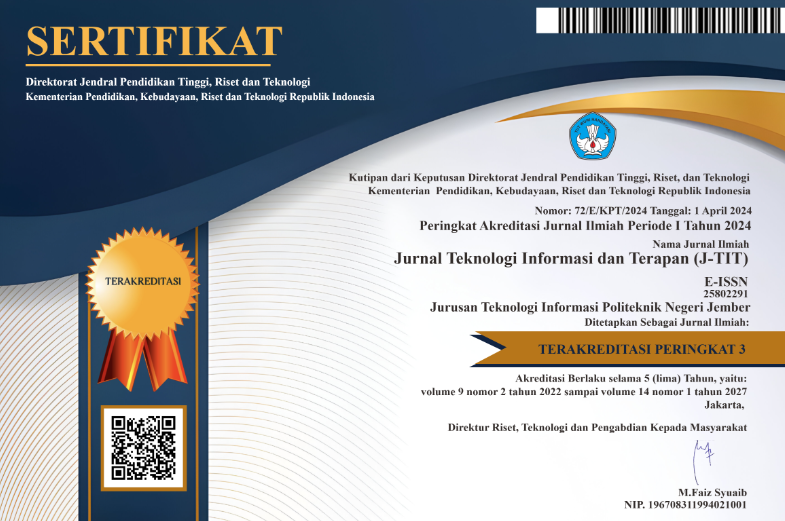Komunikasi Suara Sinyal Digital Dengan Transmisi Frekuensi 2,4 Ghz
Abstract
The limitations of developing high-tech communication systems cause the area of people who can use this service to be uneven. One technology that can be used for areas not yet reached by this high-tech communication service is to use radio communication technology. Today radio communication technology continues to develop and produce an increasingly limited frequency spectrum. One way to improve the efficient use of available frequency spectrums is the transition from analog technology to digital technology. A very significant benefit in the use of digital technology is to save the use of radio frequency spectrum bandwidth with signal compression techniques. One device that still uses analog technology is a handy talky (HT). In addition to the lack of frequency spectrum efficiency, HT technology still requires a radio station license (ISR) for its use. This experiment designed a two-way digital audio communication system that was transmitted using the NRF24L01 radio frequency transceiver module on the 2.4Ghz frequency. Analog input data from the microphone will be converted into digital data through the ADC (Analog to Digital Converter) process using a microcontroller and the digital data that will be sent is first digitally modulated using GFSK modulation then transmitted digitally. On the other hand data that already contains voice information received again by another NRF24L01 transceiver is received by the Arduino microcontroller and then formed into a PWM signal (pulse width modulation) and then released to the speaker. So the method of using digital transmission can produce efficiencies in the frequency spectrum.
The Authors submitting a manuscript do so on the understanding that if accepted for publication, copyright of the article shall be assigned to Jurnal Teknologi Informasi dan Terapan (J-TIT) and Department of Information Technology, Politeknik Negeri Jember as publisher of the journal. Copyright encompasses rights to reproduce and deliver the article in all form and media, including reprints, photographs, microfilms, and any other similar reproductions, as well as translations. Authors should sign a copyright transfer agreement when they have approved the final proofs sent by Jurnal Teknologi Informasi dan Terapan (J-TIT) prior to the publication. The copyright transfer agreement can be download here .
Jurnal Teknologi Informasi dan Terapan (J-TIT) and Department of Information Technology, Politeknik Negeri Jember and the Editors make every effort to ensure that no wrong or misleading data, opinions or statements be published in the journal. In any way, the contents of the articles and advertisements published in Jurnal Teknologi Informasi dan Terapan (J-TIT) are the sole responsibility of their respective authors and advertisers.
Users of this website will be licensed to use materials from this website following the Creative Commons Attribution 4.0 International License. No fees charged. Please use the materials accordingly.

This work is licensed under a Creative Commons Attribution-Share A like 4.0 International License
You are free to:
- Share — copy and redistribute the material in any medium or format
- Adapt — remix, transform, and build upon the material for any purpose, even commercially.
- The licensor cannot revoke these freedoms as long as you follow the license terms.









